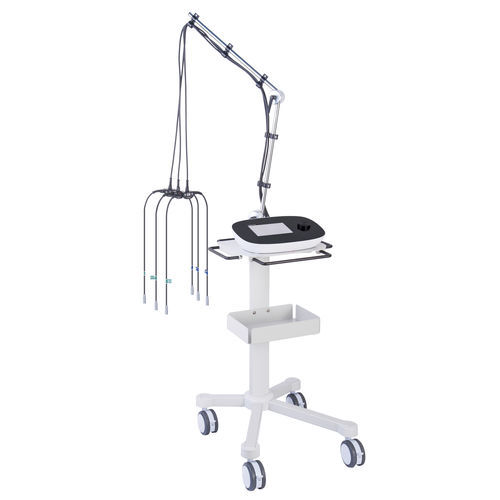
- Rehabilitation
- Kinesitherapy, Physiotherapy
- Electric stimulator
- HOMER ION Laboratory

- Company
- Products
- Catalogs
- News & Trends
- Exhibitions
Electric stimulator G-TEStrolley-mountedEMS4-channel

Add to favorites
Compare this product
fo_shop_gate_exact_title
Characteristics
- Type
- electric stimulator
- Ergonomics
- trolley-mounted
- Type of electrical stimulation
- EMS
- Number of channels
- 4-channel
- Weight
2.5 kg
(5.51 lb)- Height
103 mm
(4.1 in)- Depth
222 mm
(8.7 in)
Description
"Exercise for Those Who Cannot Exercise"
Lack of exercise due to aging, unfamiliarity with exercise, orthopedic disease, and diseases, such as respiratory/cardiovascular disorders, may cause muscle atrophy from disuse. Exercise-deficient people cannot exercise, which can lead to decreasing muscle strength, progress of the primary disease to cause pain, and distress in exercise, as well as a decrease in the will to exercise. Exercise is more often required in such people who cannot exercise/do not exercise because of the risks of being bedridden or requiring nursing care without exercise.
G-TES contracts the muscles of the entire lower extremities, such as the thighs, lower legs, gluteus, and muscles around the pelvis, by wrapping the belt electrode, the inner surface of which entirely functions as electrode, around the hips, knees, and ankles and apply current in a tubular form. Capable of moving the muscles in a wide range at once for strength training and aerobic exercise as a substitute for voluntary movement.
Performs strength training and aerobic exercise by purpose
・Strength training [Muscle mode]: Perform strong muscle contractions at 20Hz to train muscles.
・Aerobic exercise [Metabolism mode]: Perform repeated single contractions at 4Hz for aerobic exercise.
Advantages of G-TES
・Wide Range of Approach
・Comfortable at high output
・Easy to Put on
In Japan, many scientific papers have been published, and G-TES has been installed in over 1000 facilities like in various medical fields like rehabilitation, orthopedics, ICU, dialysis, and nursing care. G-TES contributes to modern medical issues such as an aging society and an increase in lifestyle-related diseases.
VIDEO
Catalogs
G-TES_catalog
2 Pages
*Prices are pre-tax. They exclude delivery charges and customs duties and do not include additional charges for installation or activation options. Prices are indicative only and may vary by country, with changes to the cost of raw materials and exchange rates.


